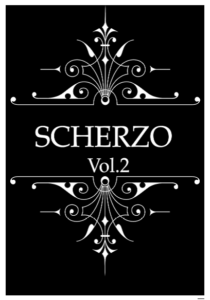| | price: free; we suggest a small donation |
Depliant, 2014
B1 size paper 100 x 70cm, folded
Bilingual, Croatian, English
Text by Janka Vukmir
The exhibition presents a series of around forty objects with applied
collages and drawings. All objects are plates made of metal,
porcelain or ceramic, all vintage, second hand, already used and
found in an attic. Surfaces of the plates are painted with acrylic paint
and or graphite, but the main feature are collages, coming from an
old illustrated book also found in the attic in Split, shortly after Eric
with his family moved to Croatia. This is Eric’s first solo exhibition
in Zagreb.
Eric del Castillo (Mexico City, 1962) is a visual artist with many
years of experience. He has exhibited in 11 solo exhibitions and over
100 group exhibitions in Mexico, USA, Spain, Germany as well as in
Croatia, where he now lives and works. He studied film and
painting, but in every medium he works, his work is characterized
by collages.
“Piles of magazines, the accumulated volumes of printed paper are
waiting to be revived. To take scissors and cut out silhouettes of
their environment. To paint by scissors instead of brush, and to
weave puzzles of an incomplete set of information fragments. Give
life to creatures composed of fragments of time and space. On a
blank sheet of paper, the figures find their peace directed by the
hand that stops them in a moment of finality. ” Write Neli Ružić and
Gonzalo Vélez in a text on Eric’s works.
The images on the plates resemble surreal, dreamy, imaginative,
sometimes adventurous, dangerous or deviant, but observing them
we remain on the edge between comprehensible / explicable and
illogical /mysterious.
Mexican curator Carlos Aranda Marquez on Eric’s earlier work says,
“Eric is a filmmaker on paper, we are voyeurs on his „storyboards“,
of that private world where the artist has abducted fragments of
nanosecond of images, and he has edited them for his movie.”
“The scenes, people and landscapes on plates we recognize as on the
border between the poetic, ironic, dramatic or humorous. Albeit
they are leaving an impression as if they were from an unknown or
at least a distant world / time, they in fact can often be identified as
already known, or the like characters, but we still remain in the gap
in between deciphering and understanding what’s really going on.”
writes J. Vukmir in the catalogue foreword.
|
